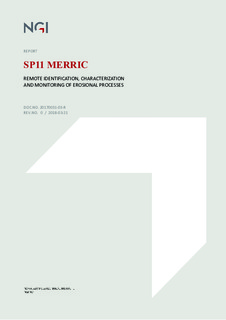| dc.description.abstract | Remote sensing techniques and geophysical techniques have enabled the collection of vital information on geotechnical, hydrogeological, and environmental processes. These techniques may offer improvements over traditional data collection techniques or may provide data not readily available using conventional instrumentation. An assessment of various remote sensing and geophysical techniques, used to collect parameters of interest to the Multi-scale Erosion Risk under Climate Change (MERRIC) project, is provided in this technical note. This technical note is a deliverable of the MERRIC work package 4 on "Warning, monitoring, and non-physical mitigation measures".
A list of 11 key parameters for coastal erosion studies was established and matched with appropriate remote sensing techniques (including microwave, laser, and optical techniques) and on- and off-shore (or near-shore) geophysical techniques. The characteristics of each of the techniques is listed and background material is provided. The maturity of these techniques is described through examples in the literature and the potential for application within the scope of MERRIC is discussed. Many of the more mature techniques described in this technical note (for example, terrestrial lidar scanning [TLS], or electrical resistivity tomography [ERT]) are already routinely used in NGI projects, and thus, their relevance for MERRIC is well understood. Other emerging techniques (for example, terrestrial radar interferometry, or multi-beam echo sounding [MBES]) are less commonly applied, but may nonetheless prove to be indispensable for future projects related to MERRIC. It is, therefore, recommended that the potential of emergent remote sensing and geophysical techniques will be further investigated using the resources available at NGI. | nb_NO |

